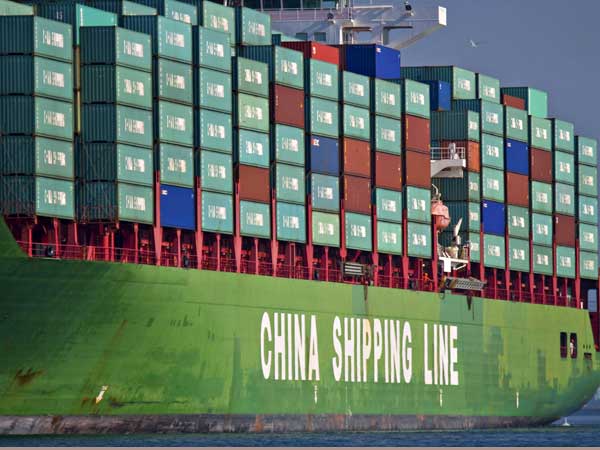
The US implementation of a 25 per cent tariff on $34 billion of Chinese imports on July 6 and the response from China, along with later announcements of potential 10 per cent US tariffs on an additional $200-$500 billion of imports, represent a significant escalation of the trade dispute.
The trade dispute between the US and China and other countries is expected to be prolonged and further trade measures to be put in place throughout the rest of 2018. Currently, the countries involved will stop short of full implementation of the most severe potential measures announced so far, including tariffs on all US automotive imports or a breakdown of NAFTA.
The trade dispute will have a negative impact on global growth. Moody’s current baseline assumes a manageable aggregate impact on growth and inflation, but a large hit to financial markets or confidence would have the potential to derail the global economy.
Higher tariffs will hurt the economy by distorting prices and creating inefficiencies globally. Companies that rely on global supply chains will likely hold off investment decisions given the uncertainty around further measures that would hinder trade flows.
Tightening of financial conditions through asset price and currency adjustment and a broader hit to consumer confidence are now more likely than a few months ago and could create headwinds to currently strong global growth.
Macro and sector impacts of the US-China trade dispute
Implementation of $50 bn of tariffs on both US and China imports now in progress -- $50 bn of goods represent 2 per cent of total US imports, 0.3 per cent of US GDP; 3 per cent of total Chinese imports and 0.4 per cent of Chinese GDP.
July 6: US imposed 25 per cent tariffs on $34 bn of imports from China. Additional 25 per cent tariffs on $16 bn of imports are to come in effect likely by the end of July after a short public review and comment period.
Target sectors: The July 6 US tariffs target electrical machinery and equipment, mechanical appliances, rubber and aviation.
Changes to product list: Coverage of intermediate inputs has been expanded considerably compared to the original list proposed on 3 April 2018, while coverage of consumer goods was reduced
In retaliation, on July 6: China imposed 25 per cent tariffs on $30 bn of US imports, with an additional 25 per cent tariff on $20 bn of goods to come in lockstep with US tariffs.
Target sectors: The July 6 Phase 1 Chinese tariffs target soybeans, agricultural and food products, and autos. Phase 2 to also target chemicals, plastics and mineral fuels.
Additional 10 per cent US tariffs on $200 bln of goods and Chinese retaliation likely in the fall -- $200 bn of goods represent 8 per cent of total US imports, 1 per cent of US GDP; $200 bn would be 11 per cent of total Chinese imports and 1.7 per cent of China’s GDP, but total Chinese goods imports from the US were about $150 bn as of the end of 2017.
July 10 proposal: The US announced its intention to impose 10 per cent tariffs on an additional $200 bn of imports from China.
Target sectors: The July 10 US product list targets a wide array of products, including computers and electronics, electrical equipment, furniture, machinery, fabricated metal products, auto and auto parts, chemicals, plastics, apparel, minerals, textiles, food, forestry and fishing, transportation equipment, and others. About half of the products are intermediate goods, about 30 per cent capital goods and the rest consumer goods.
In retaliation, on July 10: China announced that it is likely to retaliate. Measures could include higher tariffs or non-tariff restrictions, such as measures affecting US companies operating in China or restricting Chinese tourism to the US.
Target sectors: Product list not announced yet.
Macroeconomic impact on the US
The escalating trade measures will add headwinds to an otherwise robust global and US growth outlook.
US economic growth remains strong and the US economy is adding about 200,000 jobs a month despite unemployment rate close to 4 per cent.
Trade restrictions to shave off about 0.25 pp of real GDP growth in 2019 and to offset some of the underlying strong momentum of the US economy and some of the gains of the fiscal stimulus. The Fed is likely to adjust to any impact on US growth and to slow down the pace of monetary tightening.
The magnitude of the macro impacts will depend crucially on the resilience of sentiment. Tightening of financial conditions through asset price and currency adjustment and a broader hit to business and consumer confidence are now more likely than a few months ago. In stress scenarios of a material fall in asset prices and hits to confidence, recession outcomes in the US are possible.
Macroeconomic impact on China
Trade restrictions will contribute to a slowdown in China’s growth, which our forecasts already incorporate.
The escalating trade measures will add headwinds to a moderating growth outlook, within the context of policy emphasis on deleveraging.
Trade measures are likely to shave up to 0.3-0.5 pp off 2019 real GDP growth, but we assume that fiscal and policy easing will largely offset these effects. Potential further depreciation of the RMB may partly offset the loss of competitiveness from higher tariffs
Response by financial markets to the tariff announcements has been larger in Asia than in the US. Asia will likely experience higher disruption given the region’s integration in global supply chains
Larger tightening of financial conditions or decline in sentiment represent a significant downside risk to the global growth outlook and the likelihood of that risk will continue to increase through H2 2018.
—Source: Moody's Investors Service



